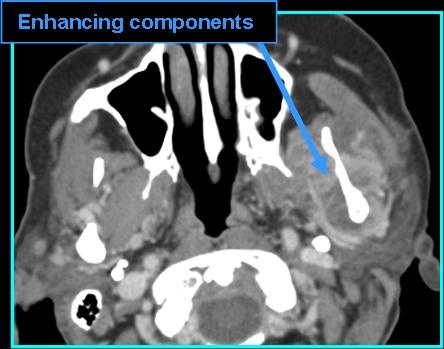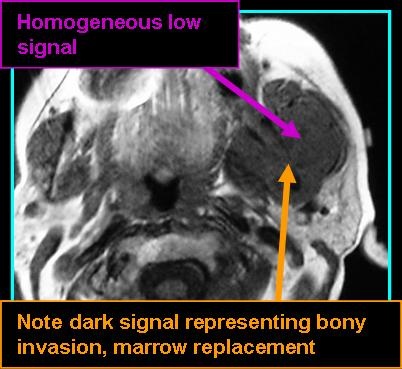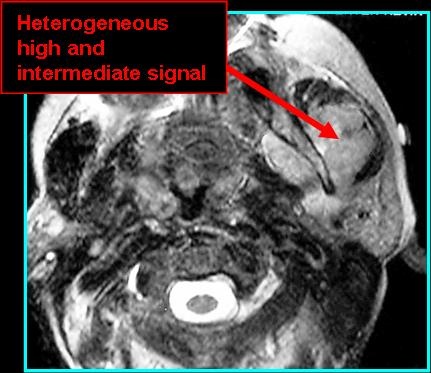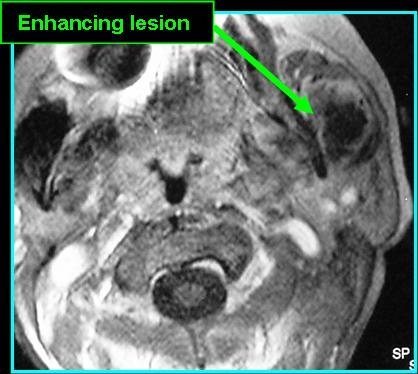Updated April 2024 by Piper Wenzel, BS
Overview
- Also referred to as osteogenic sarcoma
- Malignant cells produce osteoid (immature bone) (Sandeep et al. 2024)
- Look for aggressive periosteal reaction and bony destruction and new bone formation in the tumor matrix
- 10% of all osteosarcoma cases occur in the head and neck region (Sandeep et al. 2024)
- In the head and neck, most commonly presents in the mandible (72%), less commonly found in the maxilla (Sandeep et al. 2024)
- Occurs most frequently in the 3rd and 4th decade of life (Krishnamurthy et al. 2018) and is predominant in males (Sandeep et al. 2024)
- Symptoms include swelling, pain, paresthesia, and ulceration (Krishnamurthy et al. 2018)
- Risk factors include history of radiation exposure, Paget's disease of bone, fibrous dysplasia, and chronic osteomyelitis (Krishnamurthy et al. 2018)
Radiologic Findings
- On CT: non-contrast shows expanding lesion with notable periosteal reaction; contrast shows enhancement
- On MR: T1 shows heterogenous low and intermediate signal; T2 shows heterogenous high and low signal




References
Sandeep KS, Rathod P, Dalvi R, Pawar A, Thottiyen S, Pandya S, Sharma M, Patel S, Warikoo V, Pandya S. Osteosarcoma of Head and Neck Region: Tertiary Cancer Care Center Experience. Indian J Otolaryngol Head Neck Surg. 2024 Feb;76(1):581-586. doi: 10.1007/s12070-023-04216-z. Epub 2023 Oct 8. PMID: 38440650; PMCID: PMC10908908.
Krishnamurthy A, Palaniappan R. Osteosarcomas of the Head and Neck Region: A Case Series with a Review of Literature. J Maxillofac Oral Surg. 2018 Mar;17(1):38-43. doi: 10.1007/s12663-017-1017-8. Epub 2017 Apr 27. PMID: 29382992; PMCID: PMC5772028.